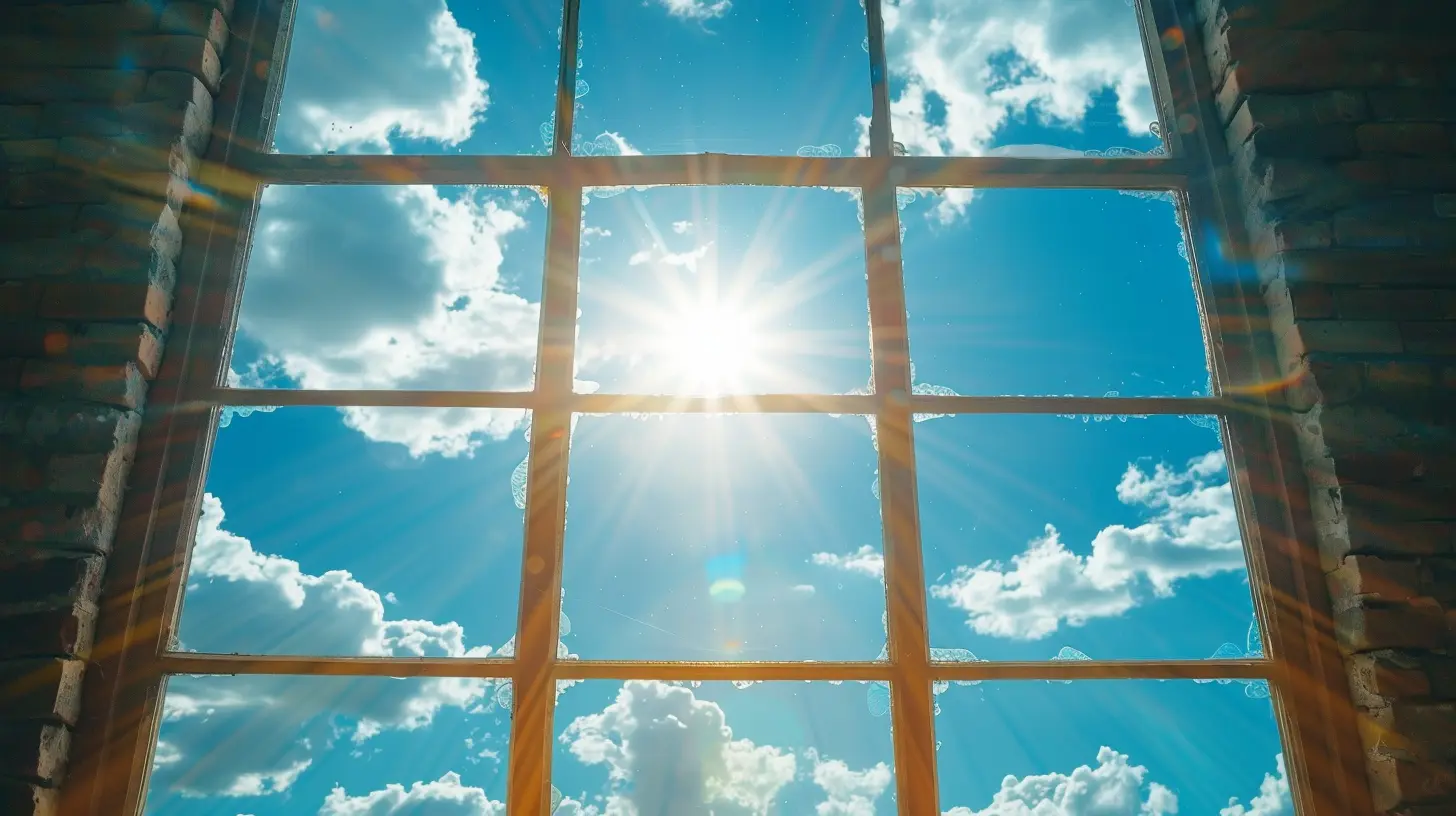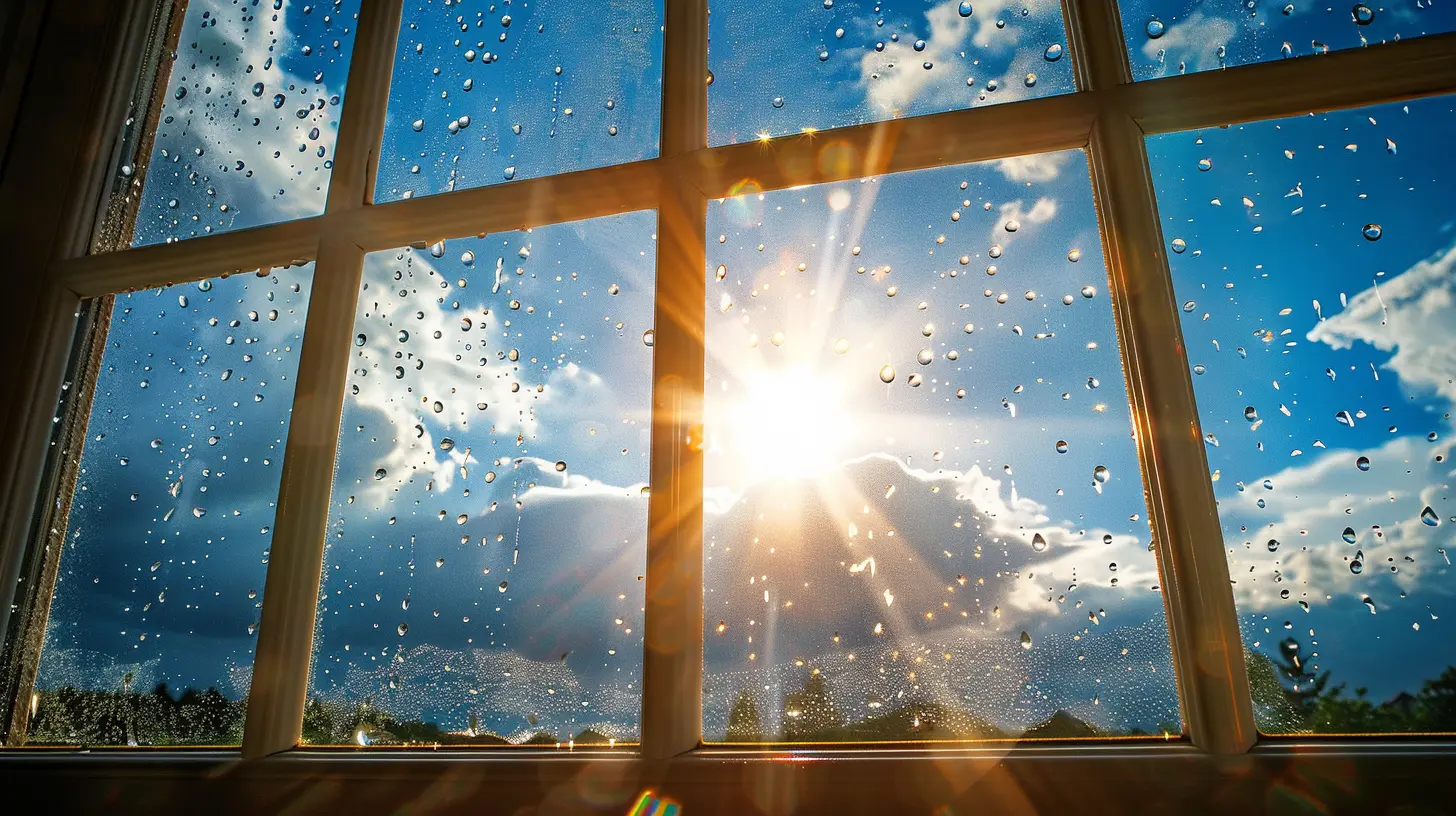Can You Get Sun Damage Through Windows? The Surprising Truth
21 October 2025
When we think about sun damage, we often picture ourselves lounging on the beach, hiking under the scorching sun, or simply spending time outdoors. We slather on sunscreen, wear hats, and seek shade to protect our skin. But what about when we’re indoors? Can the sun still harm your skin through windows? The surprising answer is yes!
In this article, we'll dive deep into how UV rays penetrate glass, the risks of sun exposure indoors, and how you can protect yourself without turning your home into a cave. 
Understanding UV Rays: The Invisible Culprits
Before we talk about how windows play a role in sun damage, let’s quickly break down what we’re dealing with—UV radiation. The sun emits different types of ultraviolet (UV) rays:- UVA Rays: These are long-wave ultraviolet rays that penetrate deep into the skin, causing premature aging, wrinkles, and even skin cancer. UVA rays can pass through glass.
- UVB Rays: These are the shorter-wave UV rays primarily responsible for sunburn. They don’t penetrate glass as easily as UVA rays.
- UVC Rays: These rays are of the shortest wavelength and are mostly absorbed by the Earth's atmosphere, so they aren’t a concern.
Now that we know the basics, let’s talk about how much of these rays reach you through your windows. 
Can UV Rays Pass Through Windows?
The short answer is yes, but it depends on the type of glass. Not all windows are created equal when it comes to blocking UV radiation.1. Standard Glass (Regular Windows)
Most house and car windows are made from standard glass, which:- Blocks UVB rays fairly well
- Allows UVA rays to pass through almost completely
So, while you may not be getting sunburned inside your car or living room, those sneaky UVA rays are still damaging your skin.
2. Tinted Windows
Some cars, office buildings, and homes have tinted windows. Depending on the tint:- It can reduce UVA exposure significantly
- Still may not offer 100% protection unless specially treated
3. Laminated Glass (Used in Car Windshields)
Your car's windshield is made of laminated glass, which has a plastic layer between two sheets of glass. This layer:- Blocks nearly 99% of both UVA and UVB rays
- Is much more protective than side windows in a car
That means if you're driving for long hours, the side windows can still allow UVA rays to reach your skin unless they have special UV protection.
4. UV-Protective Windows
Modern homes and offices are increasingly using windows with built-in UV filters. These:- Can block up to 99% of UVA and UVB rays
- Provide great protection without affecting visibility
But let’s be real—not everyone has these fancy UV-blocking windows at home. So, what does this mean for your skin health? 
Effects of UVA Exposure Indoors
Many people assume they're safe from sun damage when inside, but UVA rays tell a different story. Here’s why:1. Premature Aging & Wrinkles
UVA rays penetrate deep into the skin, breaking down collagen and elastin. This leads to sagging skin, fine lines, and wrinkles—and it happens without you even realizing it.2. Uneven Skin Tone & Hyperpigmentation
Ever notice that people who drive a lot tend to have more sunspots on the left side of their face (for those in countries where cars are driven on the right side of the road)? That’s because UVA rays penetrate through side windows and contribute to dark spots and pigmentation over time.3. Skin Cancer Risk
While UVB is often blamed for skin cancer, UVA rays also play a role. They penetrate deep into the skin, causing cellular DNA damage that can lead to skin cancer development over time. Long-term UVA exposure—even indoors—adds to this risk.4. Eye Damage
It’s not just your skin at risk—your eyes are vulnerable too. UVA rays can contribute to eye conditions like cataracts and macular degeneration. If your favorite reading spot is by a sunny window, your eyes could be paying the price.
How to Protect Yourself from Indoor Sun Damage
Since we now know UVA rays can sneak through windows, what can you do to minimize the harm? Don’t worry—you don’t need to live in darkness like a vampire! Here are some practical ways to shield yourself:1. Wear Sunscreen Indoors
You might think sunscreen is just for beach days, but applying a broad-spectrum sunscreen (SPF 30 or higher) daily—even inside—can protect your skin from UVA exposure. Look for sunscreens with zinc oxide or titanium dioxide for the best protection.2. Use Window Films or UV-Blocking Curtains
Installing UV-protective window films is an affordable way to reduce UVA penetration. You can also use UV-blocking curtains or blinds during peak sunlight hours.3. Wear Protective Clothing
If you work near a window or drive a lot, consider wearing long sleeves or UV-protective clothing to shield your arms. Some fabrics have built-in UV protection similar to sunscreen!4. Get Polarized or UV-Protected Glasses
Your eyes deserve protection too! Wear sunglasses with 100% UV protection even indoors if you’re sitting by a sunny window for long periods.5. Sit Away from Direct Sunlight
If possible, position your workspace or favorite chair away from direct sunlight. Even small adjustments can reduce cumulative UVA exposure over time.6. Use Tinted or UV-Blocking Car Windows
If you spend a lot of time in the car:- Get UV-blocking tints for side windows
- Wear sunscreen or UV-protective driving gloves for extra safety
Final Thoughts
So, can you get sun damage through windows? Absolutely. While you might not see the immediate effects of UV exposure indoors, over time, it contributes to wrinkles, skin aging, hyperpigmentation, and even skin cancer risks.The good news? Protecting yourself is easier than you think. With simple steps like wearing sunscreen indoors, using UV-protective films, and choosing the right clothing, you can keep your skin safe while still enjoying natural light in your space.
Nobody wants to look older before their time or deal with the long-term damage of UV rays—but now that you know the truth, you can take action to keep your skin looking youthful and healthy!
all images in this post were generated using AI tools
Category:
Sun ProtectionAuthor:

Angelo McGillivray
Discussion
rate this article
1 comments
Sablethorn McLoughlin
Sunlight through windows: like sneaky ninjas attacking your skin while you sip coffee!
October 25, 2025 at 3:32 PM


